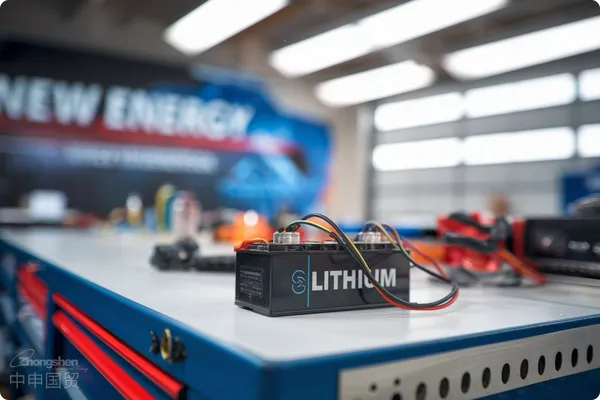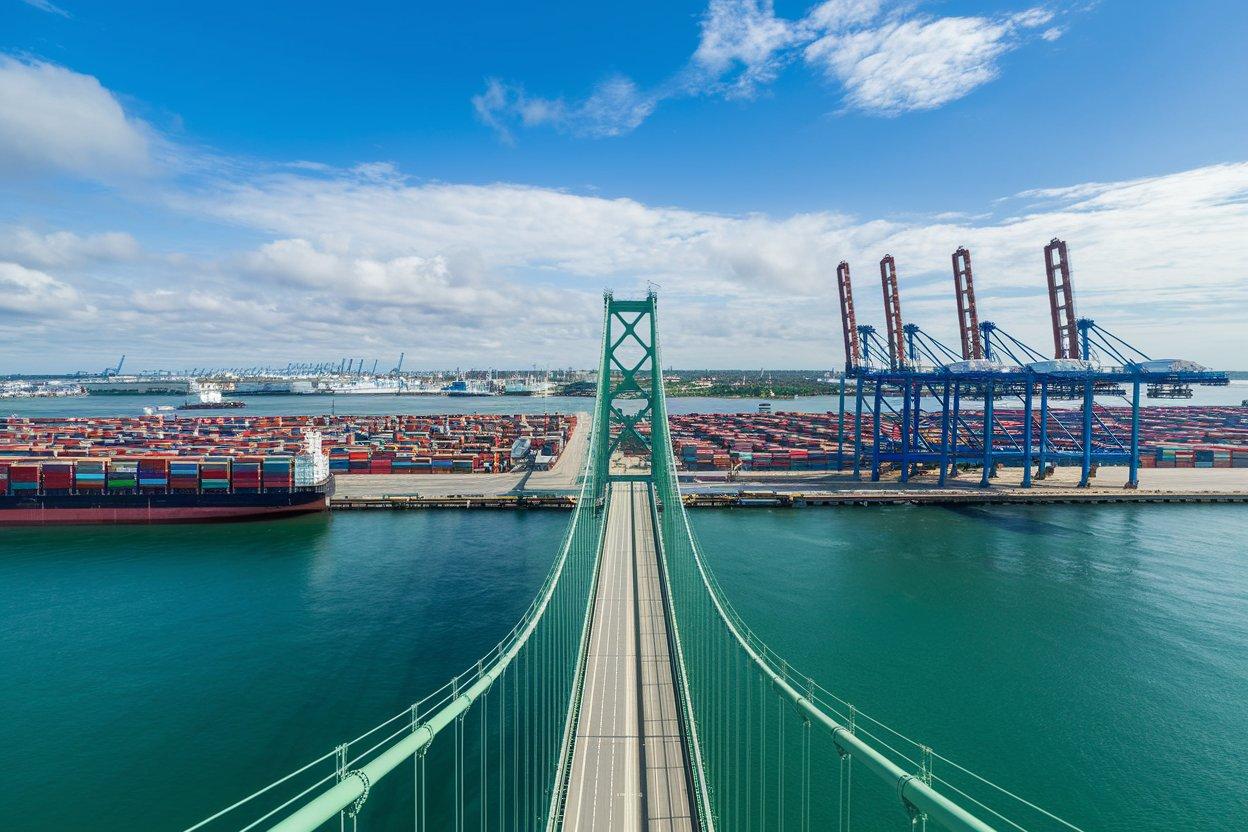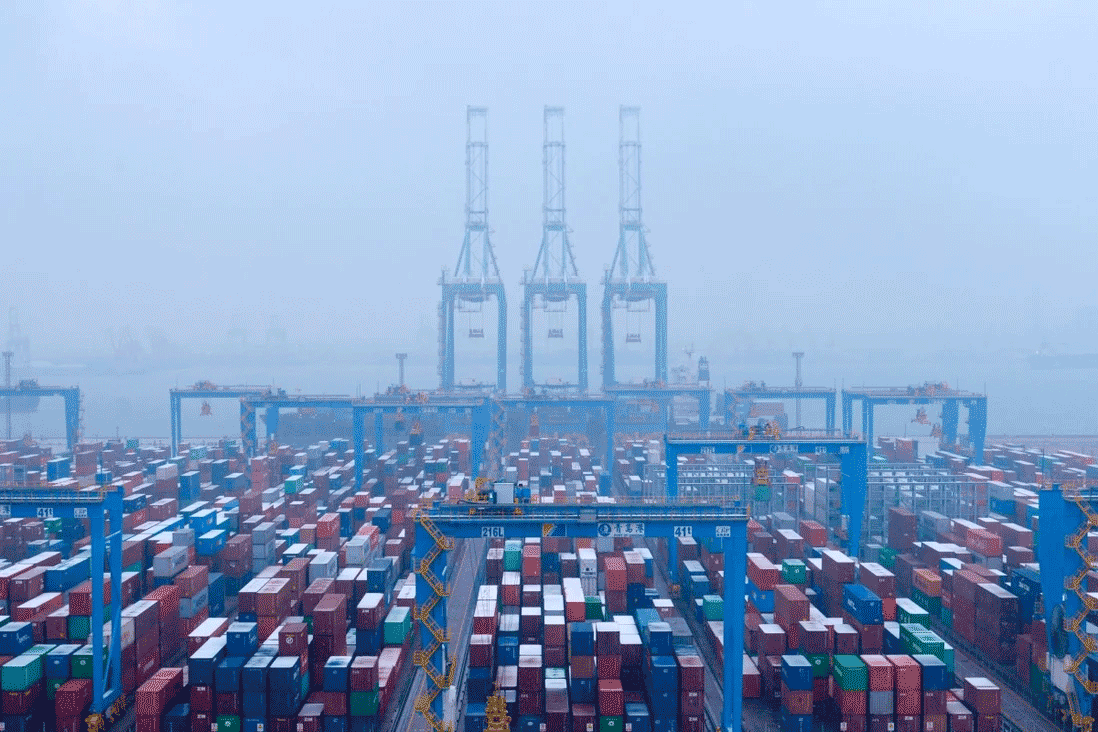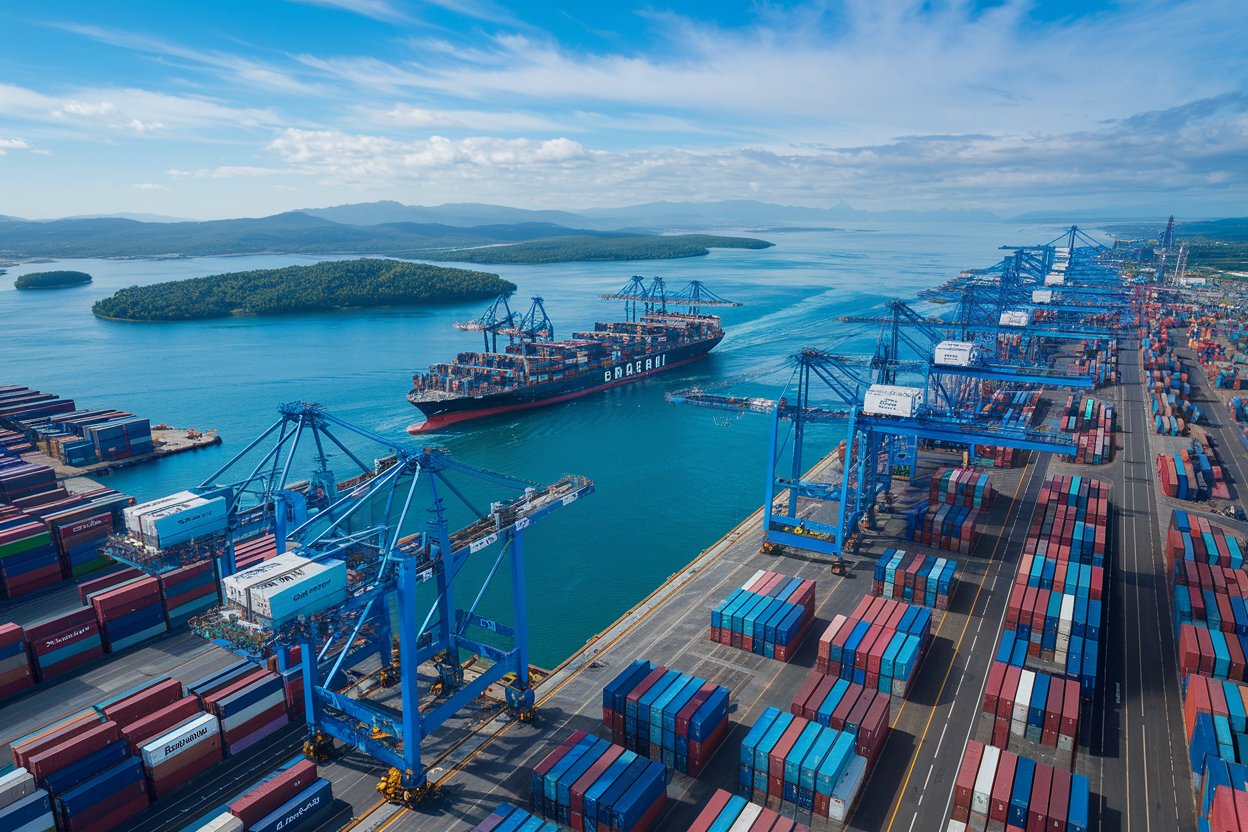Exporting remote controls containing button batteries in equipment: How to ensure compliant shipments?
欧美一区二区精品人妻 |
亚洲精品一区二区三区四区av |
欧美激情一区二区三区啪啪啪 |
尤物精品国产第一福利网站 |
小说区图片区偷拍区视频 |
国产在线观看精品区一区 |
99久久精品免费看蜜桃 |
国产精品中文字幕免费观看
|
国产91精品露脸国语对白 |
亚洲黄色av一区二区在线观看 |
国产精品中文字幕在线观看 |
国产成人啪精品午夜网站 |
亚洲精品亚洲人在线观看 |
欧美日韩一码二码三区四区
|
亚洲国产成人久久综合小说 |
亚洲电影天堂之男人的服务天堂 |
国产午夜福利视频第三区 |
亚洲av日韩精品久久国产 |
欧美国产一区二区三区在线播放 |
午夜视频在线观看精品200 |
一区二区三区有码在线播放 |
亚洲精品一区二区三区四区av
|
国产欧美一区二区三区不卡高清 |
国产爽爽爽爽爽爽爽爽爽 |
亚洲黄色av一区二区在线观看
|
欧美一区二区自偷自拍视频 |
亚洲中文字幕一区二区三区四 |
亚洲天堂熟女一区二区三区 |
欧美成人精品三级在线观看播放 |
欧美制服丝袜国产日韩一区 |
国产一级二级三级aa视频 |
欧美成人精品三级在线观看播放 |
亚洲av电影一区二区在线观看 |
同房后女生下面有黄色分泌物 |
精品国产精品久久一区免费式 |
亚洲天堂男人天堂一区二区 |
亚洲中文字幕三级电影 |
花野真衣在线观看av中出 |
91久久精品日日躁夜夜躁国产 |
日韩在线一区二区三区中文字幕 |
欧美一区久久人妻中文字幕 |
手机在线不卡二区中文字幕 |
国产黄a三级三级三级av在线看 |
成人欧美一区二区三区在线小说 |
美国毛片亚洲社区成人看 |
一区二区国产精品三区在线电影 |
人人妻人人玩人人澡人人爽理论片
|
在线精品日韩亚洲欧一二三区 |
精品国产高清三级在线观看 |
一区二区三区亚洲欧美日韩人色
|
国产精品一区二区 日韩 欧美
|
亚洲精品国产综合一线久久 |
国产av一区二区色呦呦 |
日本一区二区 在线视频 |
欧美一级高清片国产特黄大片一 |
国产综合久久精品东京热 |
欧美日韩久久久一区二区三区 |
国产黄片一区二区三区四区 |
色爱区综合激情五月综合激情 |
日韩男女激情片段在线观看视频 |
日韩免费av区二区电影 |
国产亚洲精品福利视频 |
欧美视频在线一区二区三区 |
人妻少妇精品一区二区三区视频 |
我吸着老师的白嫩大乳漫画 |
欧美国产精品久久久免费 |
亚洲中文字幕三级电影 |
欧美日韩激情在线看片亚洲 |
深深婷婷久久爱做狠狠天天
|
亚洲欧美日韩综合视频免费看
|
青青草原在线视频观看精品 |
国产精品69精品一区二区三区 |
久久婷婷色香五月综合图 |
婷婷丁香蜜桃激情五月天 |
欧美午夜一区二区三区精品 |
亚洲国产激情免费观看网站
|
av小说亚洲日中文字幕 |
国产综合久久久一区二区三区 |
欧美日韩精品综合一区二区 |
亚洲春色另类小说校园 |
亚洲综合小说另类图片五月天 |
国产一区二区自拍偷拍视频 |
欧美一区二区三区高清在线视频 |
狠狠深爱婷婷久久综合区一 |
国产一区二区精品久久呦 |
欧美激情第一页在线播放 |
欧美一区二区三高清在线观看 |
韩日国产精品一区二区三区
|
日韩av在线不卡免费看 |
男人av天堂男人的网站 |
91色老久久精品偷偷蜜臀九色 |
日本高清不卡中文字幕免费 |
精品五月天草原婷婷在线视频 |
欧美日韩精品一区二区在线观看
|
婷婷六月开心六月色六月 |
午夜视频在线观看精品200 |
久久一区二区三区欧美亚洲 |
日本一区二区免费在线视频 |
久久99精品久久久免费看永久
|
亚洲一区二区三区毛带片 |
av乱色熟女一区二区三区 |
成人午夜视频全免费观看高清 |
蜜臀人妻精品一区二区免费 |
欧美国产精品久久久免费 |
亚洲精品我不卡中文字幕乱码 |
国产成人亚洲欧美在线二区小说 |
色悠久久久久综合网小说 |
国产欧美大陆日韩精品亚洲综合 |
伊人影院在线免费观看电影 |
欧美一区二区三区四区五区 |
国产精品久久精品久久国产
|
色哟哟一区二区国产精品 |
91精品国产乱码久久蜜桃麻豆 |
污污污的网站在线免费看
|
中文高清在线中文字幕日韩 |
免费亚洲色图久久综合网 |
国产精品成人又粗又长又爽 |
久久天天躁夜夜躁狠狠躁 |
欧美日韩国产中文在线观看 |
99re热在线视频精品观看 |
久久精品三级一区二区av |
99久久精品免费看蜜桃 |
人人妻人人玩人人澡人人爽理论片
|
日韩欧美国产一区二区在线 |
国产精品日韩欧美在线第一页 |
黄色欧美精品一区二区三区
|
99精品免费久久久久久久久 |
激情综合网五月六月丁香国产
|
亚洲av电影一区二区在线观看 |
国产精品一区二区色蜜蜜 |
欧美一区二区在线电影网 |
亚洲人成网站18禁止天堂 |
亚洲国产一区二区在线网站网址 |
亚洲精品一区二区三区免 |
欧美一区二区三区免费在线观看 |
亚洲一区二区三区四区免费看 |
一区二区三区在线视频欧美
|
激情五月婷婷丁香六月 |
精品人妻二区三区在线免费观看 |
韩国三级电影善良的嫂子 |
国产乱人精品视频69av |
蜜桃视频一区二区三区在线观看 |
午夜精品久久久久久久2023 |
午夜精品久久久久久久9蜜桃 |
黄色三级电影一区二区三区四区
|
91麻豆精品国产自产在线的 |
亚洲欧美国产一区二区三区奶水 |
久久精品一区二区中文字幕 |
男人av天堂男人的网站 |
欧美精品一区二区日韩精品 |
性色av一区二区三区狠狠 |
97久久夜色精品国产蜜桃 |
欧美中文字幕一二三四乱码 |
欧美一区二区三区免费观看视频
|
午夜精品久久久久9999高清 |
欧美日韩高清在线观看一区二区 |
国产午夜精品一区二区三区不卡 |
亚洲精品欧美白浆久久久 |
亚洲人成一区二区三区不卡 |
久久久精品少妇一区二区三区 |
91亚洲欧美综合高清在线 |
亚洲欧美日韩偷拍一区二区三区 |
欧美五月激情在线播放 |
国产欧美日韩在线一区二区 |
免费看污片网站在线观看 |
亚洲国产精品久久久二区 |
真实国产老熟女粗口对白 |
av色先锋音影一区二区啪啪操 |
亚洲区欧美区综合区自拍区
|
高清日韩一区二区三区视频 |
亚洲福利欧美日韩午夜一区 |
蜜臀久久久久精品一区二区三区 |
日本高清不卡电影一区二区
|
久久久国产综合av天堂 |
国产视频日韩视频欧美视频 |
色综合一区二区日本韩国亚洲 |
国产亚洲欧美日韩看国产 |
9l精品国产高清一区二区三区
|
五月天综合网亚洲精品国产精品 |
亚洲美女日韩精品色图在线视频 |
日本精品一区二区电影在线观看 |
国产三级在线观看一区二区 |
中文字幕黄色在线免费观看 |
av电影在线观看中文字幕哦 |
国产精品日韩精品中文字幕 |
国产伦精品99久久自偷国产 |
日韩电影免费看中文字幕 |
欧美五月激情在线播放 |
欧美日本一道道一区二区 |
日韩精品免费不卡av一区二区 |
欧美精品久久婷婷人人澡 |
蜜桃av一区二区三区在线观看 |
国产精品亚洲专区一区二区三区 |
亚洲精品高清视频在线播放 |
欧美午夜一区二区三区精品 |
亚洲中文字幕精品熟女一区 |
日韩精品一区二区亚洲av性色 |
国产精品久久久精品一级 |
国产精品亚洲综合久久婷婷 |
蜜桃av一区二区三区在线观看
|
色综合一区二区日本韩国亚洲 |
中文字幕在线高清第一页 |
蜜臀国产综合久久第一页 |
日韩一区二区三区精品视频第3页 |
国产精品欧美日韩中字一区二区 |
欧美久久久久久久一区二区三区
|
欧洲欧美精品日韩色午夜 |
中文字幕日韩在线第一区 |
欧美精品一区二区日韩精品 |
麻豆国产精品专区在线观看 |
黑人中出人妻少妇一区二区 |
国产精品亚洲美女av网站 |
成人美女黄网站色大色费全看下载
|
国产区综合另类亚洲欧美 |
亚洲色图色眯眯在线播放 |
欧美激情综合色综合啪啪啪五月
|
色综合一区二区日本韩国亚洲
|
同房后下面流黄黄的液体 |
91久久国产综合久久91 |
精品国产一区二区色老头 |
日韩欧美人妻精品91高清久久 |
手机在线观看网址你懂的 |
欧美日韩国产中文在线一区二区 |
一本大道综合伊人精品热热 |
国产黄色一级电影一区二区 |
色哟哟一区二区国产精品 |
狠狠深爱婷婷久久综合区一 |
日本一区二区 在线视频 |
欧美日韩中文字幕一区不卡 |
在线播放亚洲欧美日韩第一区 |
亚洲精品成人av一区二区 |
精品国产一区二区免费久久 |
国产精品久久久国产盗摄 |
欧洲精品一区二区三区中文字幕 |
国产精品久久久国产盗摄 |
精品人人妻人人澡人人爽人人牛牛 |
日本免费一区二区三区视频在线
|
国产寡妇精品久久久久久 |
国产亚洲欧美日韩看国产 |
精品日韩亚洲一区二区三区 |
一区二区日韩精品中文字幕 |
国产精品美女下面无遮挡 |
国产精品97久久久久久毛片 |
五月激情婷婷丁香综合基地 |
亚洲精品一区二区三区免 |
亚洲国产韩国欧美在线天堂
|
日本a级一区二区在线免费观看 |
国产吧中文字幕欧美日韩 |
亚洲国产日本一区二区三区 |
免费大片a一级久久国产 |
久久精品女人天堂av免费版
|
国产综合久久久一区二区三区 |
色综合一区二区日本韩国亚洲
|
免费亚洲色图久久综合网
|
欧美日韩精品一本二本在线 |
丝袜人妻电影一区二区三区 |
久久精品国产一区二区涩涩 |
日韩av成人影院在线观看 |
亚洲天堂男人天堂一区二区 |
一区二区三区在线日本在线视频
|
av电影在线观看中文字幕哦 |
色婷婷在线免费观看视频 |
日本欧美韩国国产一区 99 |
亚洲av中文有码免费观看 |
国产69精品久久777的观感
|
国产一区二区精品美女诱惑我 |
粉嫩av一区二区三区在线播放 |
中文字幕一本一道在线 |
91的麻豆精品国产自产在线 |
99热这里只有精品2023 |
99热这里只有精品2023 |
国产精品羞羞答答色哟哟 |
国产无摭挡又爽又色又刺激 |
美日韩人妻精品一区二区三区 |
小泽玛利亚影片在线观看 |
成人黄页网站在线观看视频 |
综合久久久久综合综合久久久久 |
色婷婷综合午夜色荡天天 |
日本不卡一区二区三区在线免费
|
99re热这里只有精品视频 |
国产看片色网站亚洲av |
九九在线免费观看电影网 |
欧美黄片一区二区三区在线观看
|
日本一区二区不卡免费观看 |
国产欧美一区二区三区不卡高清 |
日本片一区二区在线视频
|
亚洲av精品一区二区三区四区 |
99riav国产精品视频一区 |
欧美一区二区精品人妻 |
国产午夜免费电影在线观看 |
国产黄片一区二区三区四区 |
五月婷婷网在线视频观看 |
亚洲视频国产视频自拍视频 |
久草片免费福利资源视频总站 |
人人妻人人妻人人妻碰碰 |
亚洲国产成人激情视频在线 |
欧美日韩二区三区在线观看 |
国产精品日韩精品中文字幕 |
日本高清不卡中文字幕免费
|
国产看片色网站亚洲av |
亚洲欧美日韩加勒比在线 |
一区二区国产精品三区在线电影 |
欧美午夜精品一区二区三 |
成人精品精品视频在线播放 |
亚洲一区二区三区四区免费看 |
国产精品免费一区二区视频 |
国产精品一区二区色蜜蜜 |
亚洲成a人片在线观看yau |
国产成人女人毛片视频在线 |
激情91精品大片在线观看 |
亚洲中文字幕精品熟女一区 |
欧美激情国产日韩视频一区 |
日本亚洲一区二区色噜噜 |
亚洲女同女同女同女同女同69 |
亚洲十八禁在线免费观看 |
欧美精品香蕉一区二区三区
|
国产精品亚洲专区一区二区三区 |
色婷婷综合午夜色荡天天 |
九九在线免费观看电影网 |
色呦呦免费观看一区二区 |
亚洲天堂一区二区三区在线观看 |
日本高清区一区二区三区四区五区 |
人妻在线视频一区二区三区
|
亚洲国产色一区二区三区 |
久久精品一二欧美无婷婷 |
欧美日韩中文字幕一区不卡 |
亚洲精品国产综合一线久久 |
亚洲欧美国产日韩中文丝袜
|
日本一区二区三区人工换脸 |
国产精品久久精品久久国产 |
欧美五月激情在线播放 |
日韩伦精品一区二区三区一级
|
黑人中出人妻少妇一区二区 |
一区二区三区四区蜜桃 |
色婷婷六月亚洲婷婷国产 |
欧美老人与小伙子性生交 |
日韩男女激情片段在线观看视频 |
欧美一区二区三高清在线观看
|
午夜天堂av天堂久久久 |
国产成人久久精品一区二区三区欧美
|
亚洲精品国产久久久久久 |
91亚洲欧美综合高清在线 |
亚洲av色图一区二区三区 |
欧美精品秘密入口一区二区三区 |
毛片毛片视频毛片视频的毛片 |
久久产精品一区二区三区日韩 |
小说区图片区偷拍区视频 |
亚洲欧美人成综合在线另 |
91亚洲国产成人久久精品蜜臀 |
久热热久这里只有精品国产
|
欧美一区二区三区激情免费 |
精品人妻少妇嫩草av码专区 |
小说区图片区偷拍区视频 |
亚洲欧美一区二区精品性色 |
蜜臀av在线精品国自产拍 |
人妻少妇电影一区二区三区四区 |
日韩不卡一区二区在线观看
|
亚洲天堂2020地址免费观看 |
国产精品一区在线观看网址 |
色综合天天综合网国产人 |
性感91白丝美女在线精品 |
一区二区三区av 在线播放 |
亚洲欧美日韩欧美中文字幕 |
国产性情片一区二区三区
|
日韩欧美一区二区三区三 |
精品国产aⅴ一区二区三区在线看
国产蜜臀av在线一区尤物
|
一本大道综合伊人精品热热 |
日韩欧美亚洲乱码中文字幕 |
男人天堂国产在线2019 |
国内精品免费偷拍小视频 |
精品久久久国产成人久久综合一 |
国产肉丝精品91一二区 |
成人精品精品视频在线播放 |
久久久精品国产亚洲av网丝祙 |
亚洲av色一区二区三区精品东京热
|
国产精品清纯白嫩美女s |
国产五月色婷婷六月丁香视频 |
午夜精品久久久久久久2023 |
国产免费av一区二区三区 |
午夜三级视频久久国产丝袜美腿 |
久久91精品国产丰满美女 |
超碰超碰超碰超碰超碰图片
|
美女18禁国产精品久久久久久 |
综合国产精品久久久久久久 |
日本a级一区二区在线免费观看 |
久久国产综合伊人77777 |
大香蕉再在线大香蕉再在线 |
青青草亚洲在线一区观看 |
色综合一区二区日本韩国亚洲 |
欧美国产亚洲自拍第二页 |
欧美激情欲高潮视频高清 |
国产精品白丝av嫩草影院 |
久久婷婷色一区二区三区 |
久久精品国产88久久综合张津瑜
|
国产精品久久久久久久久久久痴汉 |
日韩欧美国产一区二区在线 |
国产一区二区三区网站视频 |
亚洲国产成人在人网站天堂 |
久久精品一区二区66 |
国产一级二级三级在线观看视频 |
国产精品国产三级国产剧情 |
久久亚洲中文字幕精品熟女一区 |
亚洲精品我不卡中文字幕乱码 |
999精品自产国产免费 |
手机免费在线观看你懂得
|
未满十八勿进黄网站一区不卡 |
蜜臀av在线精品国自产拍
|
国产黄片a三级久久久久久 |
亚洲天堂男人天堂女人天堂 |
亚洲av日韩一级片免费看 |
欧美日本一道道一区二区 |
欧美日韩综合中文字幕一区二区 |
制服丝袜视频一区二区三区 |
欧美一区二区在线电影网 |
亚洲av中的一区二区三区四区 |
国产寡妇精品久久久久久 |
2022国产精品黄色片 |
国产精品一区二区白浆视频
|
人妻少妇电影一区二区三区四区
|
国产主播一区二区三区在线观看 |
亚洲综合国产一二三四五区 |
亚洲av乱码一区二区三区绯色 |
日韩欧美亚洲中文字幕乱码 |
久久久精品午夜免费不卡 |
日韩欧美中文字幕在线四区 |
亚洲一区二区三区四区91 |
日韩欧美一区二区精品在线看
|
亚洲一区二区三区视频在线播放 |
国产精品久久一区二区三区青青 |
欧美国产精品久久久免费 |
欧美一区二区三区免费在线观看
|
美女爱爱图片一区二区三区 |
欧美成人精品视频一区二区 |
精品亚洲午夜久久久久四季 |
国产三级在线播放视频不卡 |
99re热在线播放视频 |
国产自拍三级视频在线观看 |
日韩 中文字幕高清最新 |
欧美色精品视频在线观看 |
欧美激情综合色综合啪啪啪五月
|
日韩欧美国产一区二区在线 |
久久精品一区二区中文字幕 |
亚洲成av人黄网站在线观看 |
99久久精品免费看国产四区
|
日韩人妻精品一区二区三区在线 |
亚洲欧美色欧另类欧日韩 |
今天有什么电影可以看在电影院 |
日韩人妻精品一区二区三区在线 |
欧美日韩亚洲中文字幕一区 |
92看看午夜福利合集免费观看 |
78色精品一区二区三区 |
在线观看麻豆91精品国产 |
国产欧美日韩一区二区三区精品
|
亚洲中文字幕三级电影 |
国产成人91色精品免费网站 |
中文字幕十乱码中文字幕 |
污污污的网站在线免费看 |
日本一区二区 在线视频 |
暗交小拗女一区二区三区 |
午夜天堂av天堂久久久 |
亚洲精品我不卡中文字幕乱码 |
日韩精品亚洲一区二区三区四区
|
红桃视频污在线观看视频在线观看 |
日韩精品亚洲一区二区三区四区 |
国产69精品久久777的观感 |
国产一区二区三区日韩精品 |
国产精品午夜福利757视频 |
国产自拍偷拍在线一区二区 |
久久精品国产亚洲av麻 |
国产一区久精品免费视频 |
亚洲欧美另类人妻第一页 |
久久精品国产亚洲av麻 |
亚洲av电影一区二区在线观看 |
日本免费一区二区三区视频在线 |
国产在线观看精品区一区 |
亚洲中文字幕一区二区三区四 |
69堂凹凸视频在线观看 |
国产欧美亚洲精品第一页 |
国产免费一区二区三区性色 |
国产未成女一区二区三区 |
一区二区三区三级18岁看的 |
亚洲综合色婷婷在线影院p厂 |
国产丝袜美腿一区二区三区 |
美女露小粉嫩91精品久久久
|
国产成人亚洲欧美在线二区小说
|
国产精品91一区二区三区四区 |
亚洲福利欧美日韩午夜一区 |
制服丝袜中文字幕一区二区 |
18禁无遮挡禁无遮挡免费播放 |
精品人妻av综合一区二区 |
久久精品国产亚洲欧美成人 |
雅日韩欧美一区二区三区 |
欧美在线不卡视频每天更新 |
一区二区精品电影在线观看 |
一区二区三区中文字幕四季 |
欧美日韩国产精品系列区 |
午夜三级视频久久国产丝袜美腿
|
亚洲春色另类小说校园 |
中文字幕十乱码中文字幕 |
91色老久久精品偷偷蜜臀九色 |
亚洲成av人黄网站在线观看 |
免费大片a一级久久国产 |
视频区自拍偷拍一区二区 |
中文字幕女同性恋一区二区三区
|
久久精品国产亚洲av蜜臀 |
亚洲欧美日韩综合第一第二区 |
久久精品国产av一区二区三区
|
国产亚洲欧美日韩在线爱豆 |
欧美日韩一区二区三区四区视频 |
亚洲精品国产成人综合久久久小说 |
国产精品白丝av嫩草影院 |
国产成人啪精品午夜网站 |
美女性感黄网站视频久久久 |
日韩精品亚洲一区二区三区四区 |
手机在线观看网址你懂的 |
九九热国产这里只有精品 |
色姑娘天天操天天日天天舔 |
亚洲熟女少妇一区二区三区 |
亚洲黄色av一区二区在线观看 |
欧美一区二区自偷自拍视频 |
日韩特一级a毛大片欧美大片 |
丰满少妇人妻视频一区二区三区 |
国产自拍三级视频在线观看 |
国产欧美一区二区三区奶水 |
开心五月激情五月婷婷综合网 |
色综合天天综合网天天狠天天 |
色狠狠一区二区三区蜜桃av |
亚洲av极品男人的天堂观看 |
欧美一级高清片国产特黄大片一
|
亚洲男人天堂久久久久久久 |
美美女高潮毛片视频免费 |
精品一区二区免费视频蜜桃 |
亚洲一区二区三区四区91 |
国产一区二区三区久久综合 |
精品日韩一区二区三区中文字幕 |
午夜午夜精品一区二区三区
|
亚洲欧美另类综合图片专区 |
日本中文字幕视频在线观看 |
精品亚洲国产成人痴汉av |
国产偷国产偷亚洲高清日韩 |
色天天综合色天天天天看大片 |
亚洲中文字幕精品熟女一区 |
亚洲欧美精品激情在线观看 |
日本亚洲一区二区色噜噜 |
亚洲电影天堂之男人的服务天堂 |
黄黄黄污污污的免费网站 |
欧美视频在线一区二区三区 |
我吸着老师的白嫩大乳漫画 |
蜜桃视频一区二区三区在线观看 |
久久精品一区二区三区资源网 |
欧美色老熟妇与性老熟妇 |
亚洲精品一区二区三区麻豆 |
欧美精品在线观看一区二区三区 |
国产理论一区二区三区久久 |
欧美日韩中文字幕午夜在线 |
国产女主播一区二区三区四区
|
中文字幕十乱码中文字幕 |
国产亚洲一区二区操老熟女av |
亚洲欧美日韩偷拍一区二区三区
|
97色婷婷成人综合在线观看
|
私人小影院网站午夜在线观看 |
久久精品国产av一区二区三区 |
国产精品十八禁一区二区三区 |
中美日韩在线一区黄色大片 |
国产精品清纯白嫩美女s |
日韩伦精品一区二区三区一级 |
久久国产av性色生活片 |
小泽玛利亚av在线视频 |
色婷婷av一区二区三区免费 |
亚洲色图国产精品一区二区三区 |
亚洲国产精品久久久久性色 |
青青草av一区二区三区 |
久久婷婷色香五月综合图 |
哪里可以看日本动作电影 |
日韩欧美一区二区精品在线看 |
99久久精品免费看国产四区 |
欧美人在线一区二区三区
|
久久av一区二区三区影视 |
亚洲精品乱码久久久久久电影 |
久久精品一区二区66 |
欧美日韩免费一区二三区 |
日本精品免费偷拍小视频网 |
国产区综合另类亚洲欧美 |
欧美亚洲综合另类精品国产色拍图
|
国产吧中文字幕欧美日韩 |
精品日韩av高清一区二区三区 |
午夜福利合集极品精品视频 |
97精品久久久中文字幕 |
久久这里只有精品一区二区三区 |
97久久夜色精品国产蜜桃 |
日本牲交大片在线一区二区
|
久久精品国产亚洲av蜜臀 |
久久精品国产88久久综合张津瑜 |
黑寡妇精品欧美一区二区毛 |
久久国产精品男人的天堂av |
日韩欧美一区二区三区三 |
婷婷四房综合激情五月在线 |
日本a级一区二区资源网站
|
亚洲区欧美区综合区自拍区
|
亚洲福利欧美日韩午夜一区 |
日韩精品一区二区三区射精 |
欧美日韩精品系列一区二区 |
亚洲熟女av综合一区二区三区个
|
国产爽爽爽爽爽爽爽爽爽 |
五月婷久久不能精品视频 |
亚洲一区二区三区四区五区六 |
尤物免费视频网站在线观看 |
国产老熟女午夜精品视频 |
久久av不卡人妻一区二区三区
|
爱丝官网一区二区午夜福利视频 |
成人午夜精品久久久久久 |
欧美一区二区三区四区五区 |
亚洲av色一区二区三区精品东京热
|
欧美黄色免费网站18禁久久
|
国产精品免费不卡视频专区 |
一区二区三区有码在线播放 |
国产欧美日韩精品一区二区在线 |
久久综合婷婷伊人五月天 |
久久天天躁夜夜躁狠狠躁 |
欧美电影日本电影国产电影 |
国产黄片一区二区三区四区 |
色狠狠婷婷一区二区三区 |
欧美精品一区二区三区在线看午夜
|
久久久精品一区二区免费 |
欧美精品一区二区日韩精品 |
欧美亚洲一区二区久久播 |
国产精品久久久久久成人 |
亚洲天堂一区二区三区在线观看
|
欧美午夜精品久久久久久黑人 |
欧美一区二区三区激情免费 |
欧美亚洲一区二区久久播 |
国产欧美精品一区二区在线
|
日韩av免费高清在线观看 |
天堂网久久久国产午夜精品一二 |
中文高清在线中文字幕日韩 |
欧美日韩加勒比一二三区 |
国产未成女一区二区三区 |
亚洲精品乱码国产精品乱码 |
国产一级二级三级在线观看视频
|
日韩在线一区二区三区中文字幕
|
国内一区二区三区黄色片 |
一区二区三区欧美一级爽 |
日韩av一区二区三区免费观看
|
日韩欧美精品久久久免费 |
欧美日韩久久一区二区三区 |
不卡在线一一区二区三区91 |
亚洲欧美国产乱子精品观
|
一区二区三区在线观看日韩 |
一区二区三区中文字幕乱码 |
欧美色老熟妇与性老熟妇 |
亚洲欧洲日韩国产免费 |
91视在线国内在线播放 |
久久精品女人天堂av免费版 |
综合欧美视频一区二区三区 |
亚洲av日韩av全部精品 |
三级av电影在线免费观看 |
五月婷婷六月丁香在线播放 |
91精品国产薄丝高跟在线播 |
欧美激情国产日韩视频一区 |
欧美极品色午夜视频在线观看 |
男人天堂国产在线2019 |
国产精品网红尤物福利在线 |
一本大道综合伊人精品热热 |
一区二区三区四区欧美日韩日本道 |
在线播放亚洲欧美日韩第一区 |
日本不卡一区二区三区在线免费 |
最新国产免费成人色av |
亚洲天堂熟女一区二区三区 |
日本一区二区三区不卡视频在线
|
亚洲欧美国产日韩中文丝袜 |
yyy6080韩国三级理论久久 |
欧美黄色免费网站18禁久久
|
日本一区二区国产好的精华液 |
欧美色综合天天综合高清网 |
欧美久久免费鲁丝一二区 |
国产av剧情精品老熟女 |
亚州中文字幕乱码中文字幕 |
小泽玛利亚的电影在线观看 |
欧美日韩综合中文字幕一区二区 |
日本黄色中文字幕不卡在线 |
国产日本亚洲一区二区三区 |
黄黄黄污污污的免费网站 |
欧美一区二区三区亚洲一区 |
国产免费一区二区三区性色 |
中文字幕免费av中文字幕免费 |
欧美一区二区三区免费在线观看
|
久久蜜臀av一区二区中文字幕 |
精品人妻一区二区三区在线影院 |
五月天最新网址精品综合 |
亚洲国产日韩欧美高清片 |
日韩精品亚洲一区二区三区四区 |
国产日本欧美在线一区二区 |
美女毛片一区二区三区四区
|
97久久久综合亚洲久久88 |
91精品久久久久久粉嫩 |
秋霞日韩欧美一区二区三区 |
亚洲人妻一区二区三区av |
亚洲精品一区二区三区免 |
日韩十八线网站操操搞黄色 |
91精品蜜臀在线一区尤物 |
日韩av一区二区三区网站 |
av免费精品一区二区三区蜜桃 |
亚洲国产精品久久久av |
国产精品成av人在线观看片 |
久久久精品国产亚洲av网麻豆 |
精品日韩亚洲一区二区三区 |
青青草原在线视频观看精品 |
精品国产aⅴ一区二区三区在线看
国产蜜臀av在线一区尤物
|
18禁真人污视免费网站
|
国产精品69精品一区二区三区 |
欧美日韩亚洲激情在线观看 |
久久精品噜噜噜成人av |
国产中文高清日韩av网站
|
亚洲欧美一区精品中文字幕 |
亚洲色图日韩综合在线观看 |
爱丝官网一区二区午夜福利视频 |
国产高清在线精品一区二区三 |
亚洲av伊人久久综合小说 |
亚洲第一欧美一区二区精品 |
中文字幕成人精品久久不卡 |
欧美极品色午夜视频在线观看
|
日韩亚洲欧美中文字幕在线观看 |
日本人妻与家公的伦理片 |
精品亚洲午夜久久久久四季 |
国产亚洲一区二区三不卡
|
在线看的中文av网址导航 |
国产专区一线二线三线av |
日本精品免费偷拍小视频网 |
一区二区三区久久久久国产精品
|
欧美精品国产日韩一区二区三区 |
欧美日韩精品一区二区中文字幕 |
日韩欧美中文字幕无敌色 |
国产精品蜜臀av在线一区 |
大胸熟女少妇一区二区三区 |
亚洲欧洲日韩国产免费 |
久热热久这里只有精品国产 |
91麻豆精品国产91久久久熟女 |
亚洲国产欧美日韩成人精专区 |
人妻av在线一区二区三区 |
av乱色熟女一区二区三区 |
欧美中文字幕一二三四乱码 |
中文字幕黄色综合网免费 |
婷婷激情综合亚洲五月色 |
18禁真人污视免费网站 |
五月婷久久不能精品视频 |
亚洲成人日韩高清在线观看 |
日本精品免费偷拍小视频网 |
日本伦理在线观看中文字幕 |
国产一区二区三区 视频 |
久久久精品国产亚洲av网麻豆 |
欧美日韩一区二区三区四区视频
|
亚洲和欧洲一码二码区哪 |
少妇的一区二区三区四区 |
国产蜜臀av在线一区尤物 |
国产精品一区二区白浆视频 |
色狠狠一区二区三区蜜桃av |
欧美午夜一区二区三区精品 |
男女污污视频在线观看国产 |
国产一区二区三区色噜噜91 |
日本中文字幕视频在线观看 |
欧美一区二区在线电影网 |
欧美亚洲国产日韩在线观看 |
欧美一区二区三区亚洲一区 |
青青视频在线观看一级二级 |
伊人影院在线免费观看电影 |
国产午夜福利视频第三区 |
国产成人精品高清在线麻豆 |
免费久久久久久中文字幕 |
美女高跟鞋喷水一区二区 |
欧美一区二区三区加勒比 |
你懂的国产精品永久在线 |
久久精品亚州一区二区三区 |
国产精品综合视频一区二区三区 |
欧美成人高清视频在线播放 |
国产电影一区二区三区在线观看
|
国产亚洲av午夜在线路线 |
国产免费一区二区三区性色 |
99精品免费久久久久久久久 |
成人精品一区二区三区电影黑人 |
国产一区二区三区在线啊
|
亚洲综合视频在线免费观看
|
中文字幕一二三四区亚洲乱码 |
黄色a级三级三级三级的电影 |
欧美中文字幕一二三四乱码 |
国产精品久久久久久成人 |
一区二区三区三级18岁看的 |
亚洲欧美日韩偷拍一区二区三区 |
欧美亚洲一区二区久久播 |
18禁无遮挡禁无遮挡免费播放 |
亚洲一区二区三区自拍偷拍 |
极品美女扒开粉嫩小的漫画 |
久久偷拍国内亚洲青青草 |
亚洲加勒比精品一区二区 |
久久精品人妻一区二区三区一 |
亚洲欧美日韩加勒比在线 |
中文字幕欧美精品人妻一区 |
欧美不卡一区二区在线视频 |
日韩欧美一区二区三区三 |
国产精品国产三级农村妇女 |
国产欧美日韩精品久久久 |
国产精品妇女久久久久久 |
99国产精品久久久久久久久 |
欧美日本一区二区免费看 |
制服丝袜视频一区二区三区
|
亚洲天堂一区二区三区在线观看 |
国产av剧情片一二三区 |
久久久亚洲最大ⅹxxx |
欧美黄色免费网站在线观看 |
蜜桃亚洲精品一区二区三区 |
手机在线观看国产一区二区三区 |
欧美日韩国产中文在线一区二区 |
黄色av网址在线免费观看 |
国产婷婷香蕉av一区二区三区 |
中文字幕日韩欧美日韩在线 |
高清精品一区二区三区伊人 |
亚洲区激情区图片小说区 |
农村老女人久久毛片免费看 |
夜夜夜夜爽爽爽爽爽爽爽 |
亚洲一区二区三区四区免费看
|
欧美日韩免费电影一区二区 |
精品国产污免费网站入口 |
18禁真人污视免费网站 |
欧美日韩精品一本二本在线 |
亚洲熟女少妇一区二区三区 |
欧美一区二区免费在线观看 |
亚洲欧美国产日韩中文丝袜 |
日本东京热久久成人免费电影 |
神马午夜福利影院在线观看 |
污污污的网站在线免费看 |
我露出雪白的奶头给我同桌吃 |
色综合天天综合网天天狠天天 |
久久国产av性色生活片 |
av色先锋音影一区二区啪啪操 |
国产精品成av人在线观看片 |
国产女同性恋一区二区三区 |
国产大学生自拍视频在线 |
欧美激情综合色综合啪啪啪五月
|
综合久久五十路熟女中出 |
午夜天堂精品久久久久91色爱 |
视频区 图片区 小说区免费 |
欧美日韩国产精品系列区
|
亚洲色图日韩综合在线观看 |
亚洲av男人的天堂麻豆 |
亚洲av毛片一区二区三区影视 |
欧美一区二区三区四区五区 |
最近日韩一区二区三区四区av |
精品人妻午夜一区二区三区四区
|
久久99国产精品一区二区三区 |
五月婷久久不能精品视频 |
国产亚洲欧美一区二区精 |
日韩精品人妻午夜一区二区三区 |
国产清纯美女啪精品一区 |
国产精品久久久久福利电影 |
av网站在线免费观看入口 |
中文字幕欧美激情一区二区 |
国产成人啪精品午夜网站 |
91色综合久久夜色精品国产 |
日本不卡一区二区三区在线免费 |
精品人妻少妇系列女友系列 |
国产一级性片在线观看 |
国产精品午夜福利757视频 |
黄色片黄色片黄色片亚洲黄色片 |
欧美与黑人午夜猛交久久 |
国产欧美日韩精品久久久 |
国产精品白丝av嫩草影院 |
精品国产熟女一区二区三区
|
日韩不卡一区二区在线观看 |
日韩欧美一区二区三区中出内射
|
亚洲日本国产一区二区精品成人 |
国产日韩欧洲亚洲一二三区 |
麻豆一区二区国产三区亚洲人
|
日韩特一级a毛大片欧美大片 |
色婷婷六月亚洲婷婷国产 |
日韩中文字幕久久一二三区
|
国产在线精品二区一东京热 |
亚洲国产精品有码一区二区 |
国产欧美日韩精品久久久 |
青青久在线视频视频在线 |
成人激情毛片免费在线看 |
国产欧美一区二区精品婷婷 |
久久产精品一区二区三区日韩 |
国产91色综合久久免费分享 |
成人污污视频在线观看网站 |
成人欧美一区二区三区视频 |
国产欧美日韩在线一区二区 |
日韩欧美中文字幕1234区 |
日韩亚洲高清一区二区三区 |
美女成人亚洲黄色福利视频 |
av网站大全在线免费观看 |
欧美不卡一二三在线视频 |
亚洲综合视频在线免费观看 |
欧美精品秘密入口一区二区三区
|
欧美日韩一区二区啪啪啪 |
日韩人妻精品久久久久久 |
99久久精品免费看国产一区 |
亚洲熟女少妇一区二区三区 |
国产亚洲精品久久午夜玫瑰园 |
久久久久国产一区二区三区下载
|
色爱区综合激情五月综合激情 |
91人妻人人澡人人爽从精品 |
欧美一区二区三区四区五 |
久久久久精品久久综合av |
最好看的日韩中文字幕电影 |
国产亚洲av另类一区二区三区 |
婷婷激情综合亚洲五月色 |
日本一区二区国产好的精华液 |
亚洲综合色婷婷在线影院p厂
|
在线小视频一区二区三区 |
乱人伦人妻中文字幕禁忌1 |
亚洲综合欧美综合视频一区 |
国产欧美另类久久久精品不卡
|
美女毛片一区二区三区四区 |
欧美午夜精品一区二区三 |
国产流白浆一区二区三区免费视频 |
红桃视频污在线观看视频在线观看 |
极品少妇被弄得99精品欧美 |
国产成人91色精品免费网站
|
欧美激情综合色综合啪啪啪五月 |
美女露小粉嫩91精品久久久 |
蜜臀av一区二区国产在线 |
欧美黄色男人日女的阴道 |
亚洲中文字幕精品熟女一区 |
亚州女同性恋一区二区三区
|
国产欧美一区二区三区精剧 |
亚洲午夜精品毛片成人播放 |
国产日韩欧美视频在线播放 |
欧美精品一区91久久久 |
国产五月色婷婷六月丁香视频 |
最近中文字幕mv免费高清 |
你懂的国产精品永久在线 |
日韩欧美亚洲国产精品字幕久久久 |
精品久久久久久亚洲网站 |
亚洲综合国产一二三四五区 |
欧美精品久久婷婷人人澡 |
国产亚洲综合一区二区在线观看 |
国产无套精品白浆在线观看 |
美女高跟鞋喷水一区二区 |
日本精品动漫一区二区三区 |
欧美人式的精品一区二区 |
亚洲天堂男人天堂一区二区 |
91久久精品一区二区三区大 |
国产欧美日韩一区二区三区精品 |
国产成人亚洲欧美在线二区小说 |
精品人妻午夜一区二区三区四区 |
亚洲欧美一区精品中文字幕 |
国产精品爽爽va在线全集观看 |
国产一级性片在线观看 |
亚洲国产成人激情视频在线 |
日韩在线观看中文字幕一区二区 |
999中文视频在线观看 |
99re热这里只有精品视频 |
精品视频美女一区二区三区 |
国产精品国产三级国产剧情 |
日本精品一区二区电影在线观看 |
午夜视频在线观看视频在线观看视频
|
欧美精品久久久久久一区二区三区 |
国产精品初高害羞小美女 |
97色婷婷成人综合在线观看 |
日韩欧美亚洲乱码中文字幕 |
国产亚洲加勒比久久精品 |
欧美人在线一区二区三区 |
日韩av在线亚洲一区二区三区
|
成人午夜视频全免费观看高清
|
欧美一区二区黄片免费观看 |
久久av一区二区三区四区五区 |
蜜臀av一区二区三区蜜乳 |
国产精品亚洲av蜜桃三区 |
国产未成女一区二区三区 |
免费无遮挡午夜视频网站
|
国产亚洲欧美日韩看国产 |
日韩精品 中文字幕 有码系列 |
精品一区二区三区在线网站
|
欧美日韩中文字幕一区不卡 |
欧美日韩精品一区二区在线看 |
欧美日本一道道一区二区 |
中文字幕日韩欧美第一页 |
亚洲av色一区二区三区精品东京热 |
日韩国产另类欧美在线观看 |
日本a级一区二区资源网站 |
精品精品国产一区二区性色av |
久久国产综合伊人77777 |
日韩欧美中文字幕1234区 |
欧美成人午夜一区二区三区 |
国产欧美大陆日韩精品亚洲综合 |
一区二区三区视频二男一女 |
最新国产日韩欧美中文在线 |
高清精品一区二区三区伊人
|
亚洲第一欧美一区二区精品 |
日韩av成人影院在线观看 |
美女一区二区三区亚洲麻豆 |
青青草原在线视频欧美 |
亚洲欧美日韩精品中文字幕在线 |
久久蜜臀av一区二区中文字幕 |
亚洲va欧美va天堂v国产综合 |
国产日本亚洲一区二区三区 |
18禁真人污视免费网站 |
国产亚洲精品久久久久久久久动漫 |
美女18禁国产精品久久久久久 |
国产精品免费不卡视频专区 |
亚洲欧洲日韩一区二区三区 |
亚洲一区二区在线观看的av |
青青草av一区二区三区 |
人人妻人人澡人人爽人人精品不卡 |
91亚洲欧美综合高清在线 |
欧美亚洲国产日韩品久久 |
99re热这里只有精品视频 |
我吸着老师的白嫩大乳漫画 |
久久久久久久国产黄片 |
国产精品成av人在线观看片 |
日韩一区日韩二区日韩三区
|
91人妻久久久久99精品系列 |
99re热自拍视频在线 |
国产盗摄一区二区三区厕所视频 |
91亚洲欧美综合高清在线 |
日韩av在线亚洲一区二区三区 |
午夜三级视频久久国产丝袜美腿 |
最新国产免费成人色av |
亚洲国产日韩精品一区二区三区 |
国产精品宅福利无圣光视频 |
97影院理论片在线观看 |
欧美人在线一区二区三区 |
精品久久国产老人久久综合 |
久久久久精品久久综合av |
熟女av综合一区二区三区 |
成片免费视频观看大全一起草
|
久久精品一区二区三区资源网 |
国产欧美国产精品第二区 |
久久五月婷婷爱综合亚洲 |
美女爱爱图片一区二区三区
|
色姑娘天天操天天日天天舔 |
欧美成人免费va影院高清 |
亚洲激情五月之综合婷婷 |
狠狠深爱婷婷久久综合区一 |
一区二区三区中文字幕乱码 |
日韩精品亚洲国产成人av |
中文字幕黄色综合网免费 |
蜜臀久久久久精品一区二区三区 |
小说区图片区视频区亚洲 |
欧美日韩中文字幕一区不卡 |
91精品国产综合久久久久久蜜月 |
亚洲综合精品一区二区三区 |
日韩精品电影综合区亚洲 |
日韩免费高清中文av |
99久久一区二区三区免费 |
99久久精品免费看国产一区 |
欧美精品久久婷婷人人澡 |
亚洲av资源网站在线观看 |
国产美脚交足视频在线观看 |
日韩精品亚洲国产成人av |
成人激情毛片免费在线看 |
色天天综合色天天天天看大片 |
91精品国产乱码久久蜜桃麻豆 |
欧美精品区一区二区三区 |
亚洲欧美一区精品中文字幕 |
午夜福利国产盗摄久久性 |
国产伦精品99久久自偷国产 |
91亚洲国产成人久久精品蜜臀 |
亚洲av资源网站在线观看 |
成人精品精品视频在线播放 |
一区二区三区日本韩国欧美 |
午夜天堂av天堂久久久 |
日韩欧美人妻精品91高清久久 |
国产婷婷香蕉av一区二区三区
|
国产精品色午夜免费视频 |
日韩精品人妻午夜一区二区三区 |
国产乱人精品视频69av |
亚洲综合欧美综合视频一区 |
日本东京热久久成人免费电影 |
久久久精品久久久精品久久 |
欧美巨大精品一区二区三区 |
国产成人久久精品一区二区三区欧美
|
欧美一区二区三区免费观看视频 |
色噜噜日韩精品欧美一区 |
蜜桃av一区二区三区在线观看 |
国产精品亚洲专区一区二区三区
|
亚洲精品国产成人综合久久久小说
|
神马午夜福利影院在线观看 |
91视在线国内在线播放 |
天天天天天日夜夜夜夜夜夜操 |
尤物免费视频网站在线观看
|
亚洲av日韩一级片免费看 |
亚洲视频在线观看第一区 |
国产欧美日韩精品一区二区在线 |
中国一区二区三区高清电影 |
日本高清视频一区二区在线观看 |
日本欧美韩国国产一区 99 |
91青青青手机频在线观看 |
精品免费久久久久久影院 |
美女成人亚洲黄色福利视频 |
欧美精品网站一区二区三区 |
爱丝官网一区二区午夜福利视频 |
亚洲精品一区二区三区免 |
国语自产精品视频在线视频学生
|
亚洲欧美中文日韩另类特殊
|
最好看的日韩中文字幕电影 |
日本一区二区三区不卡视频在线 |
欧美一区二区三区四区五区 |
日本一区二区国产好的精华液 |
亚洲中文欧美日韩在线不卡
|
蜜桃av一区二区三区在线观看 |
日韩精品免费不卡av一区二区 |
久久精品一区二区中文字幕 |
91精品蜜臀在线一区尤物 |
欧美一区二区黄片免费观看 |
国语自产拍在线观看国产精品 |
日本精品动漫一区二区三区 |
国产三级在线观看一区二区 |
综合久久五十路熟女中出 |
欧美日韩视频在线一区二区三区
|
欧美中文字幕精在线不卡 |
高清亚洲中文字幕一区二区 |
69堂凹凸视频在线观看 |
欧美日韩一码二码三区四区 |
国产成人啪精品午夜网站 |
亚洲另类国产精品一区二区三区 |
国产a级精品一区二区免费看视频
国产激情av一区二区三区
|
a天堂中文在线官网在线 |
成人午夜视频全免费观看高清 |
国产91精品露脸国语对白 |
四季av一区二区三区中文字幕 |
国产日本欧美在线一区二区 |
精品人妻久久久久久888不卡 |
国产一区二区三区亚洲综合 |
免费看国产污黄剧情网站 |
国产另类av一区二区三区 |
日韩免费av区二区电影 |
在线播放国产久草性av |
久久99精品久久久久久秒播 |
国产性情片一区二区三区
|
日本一区二区免费在线视频 |
亚洲va欧美va天堂v国产综合 |
五月婷婷丁香综合中文字幕 |
日韩欧美中文字幕一区二区三区 |
欧美国产亚洲自拍第二页 |
日本大香伊一区二区三区 |
欧美亚洲成人一区二区三区 |
国产一区二区日韩欧美在线 |
亚洲欧美人成综合在线另 |
私人小影院网站午夜在线观看 |
日韩av高清中文字幕在线观看 |
精品一区二区三区高潮视频 |
91色综合久久夜色精品国产 |
久久五月婷婷爱综合亚洲 |
欧美精品网站一区二区三区 |
亚洲av伊人久久综合小说 |
狠狠狠综合久久久久久久 |
欧美黄色免费网站18禁久久
|
久久久精品一区二区三区大全 |
精品亚洲午夜久久久久四季
|
欧美黄色免费网站在线观看 |
av网站在线免费观看入口 |
一区二区三区有码在线播放 |
久久精品女人天堂av免费版 |
国产精品色午夜免费视频 |
久久这里只有精品一区二区三区 |
九九热久久这里有免费精品 |
欧美一区二区自偷自拍视频 |
国产91精品露脸国语对白 |
亚洲一区二区在线观看的av |
狠狠深爱婷婷久久综合区一 |
日韩男女激情片段在线观看视频
|
亚洲国产色一区二区三区 |
国产一区免费在线观看99 |
99久久一区二区三区免费 |
国产女主播一区二区三区四区 |
亚洲色图国产精品一区二区三区 |
国产精品日韩精品中文字幕 |
一区二区三区中文字幕四季 |
少妇人妻精品一区三区二区 |
色综合天天综合网国产人 |
手机在线免费观看你懂得 |
在线看的中文av网址导航 |
日本高清视频一区二区在线观看 |
日韩熟女精品一区二区三区视频
|
亚洲va欧美va人人爽高清 |
久久91精品国产丰满美女 |
91偷国自产一区二区三区蜜臀 |
国产丝袜美女av一区二区三区 |
久久久精品国产亚洲av网麻豆 |
精品国产熟女一区二区三区 |
国产精品久久永久免费看 |
中文字幕在线高清第一页 |
亚洲av熟女国产一区二区性色 |
国产在线精品二区一东京热 |
国产清纯美女啪精品一区 |
欧美综合在线观看一区二区 |
91在线免费观看高清视频
|
清纯唯美亚洲色图在线视频 |
亚洲黄色av一区二区在线观看 |
成人美女黄网站色大色费全看下载
|
欧美一区国产二区在线观看 |
亚州中文字幕乱码中文字幕
|
69热视频在线观看免费 |
国产丝袜美女av一区二区三区 |
亚洲人成伊人成综合网76 |
91偷国自产一区二区三区蜜臀 |
日本一区二区三区不卡在线看
|
高清精品一区二区三区伊人 |
久久精品三级一区二区av |
欧美亚洲成人一区二区三区 |
日韩a人毛片精品无人区乱码 |
精品女同一区二区三区亚亚洲洲 |
久久精品女人天堂av免费版 |
亚洲国产天堂久久综合网 |
国产亚洲一区二区三区综合片
|
亚洲熟女熟妇av一区二区三区 |
清纯唯美亚洲色图在线视频 |
人人妻人人玩人人澡人人爽理论片 |
久久精品国产av一区二区三区 |
91麻豆精品国产自产在线的
|
精品人妻av综合一区二区 |
亚洲综合国产一二三四五区 |
国产一区二区三区精品成人爱 |
日韩欧美精品久久久免费 |
中文字幕免费av中文字幕免费 |
色哟哟一区二区国产精品 |
黄色资源网日韩三级一区二区 |
久久这里只有精品一区二区三区
|
高清不卡一卡二卡区在线 |
青草伊人久久综在合线亚洲
|
一区二区三区欧美一级爽 |
美女性感黄网站视频久久久
|
国产精品久久久久久久久久久痴汉 |
综合久久久久综合综合久久久久
|
日韩精品电影综合区亚洲 |
国产欧美另类久久久精品不卡
|
狠狠人妻久久久久久综合密桃
|
未满十八勿进黄网站一区不卡 |
日韩欧美一区二区三区中出内射 |
日韩夫妻精品熟妇人妻一区 |
欧美三级在线观看不卡1区 |
精品少妇久久一区二区三区 |
亚洲产国偷v产偷v自拍一区 |
久久av一区二区三区四区五区 |
五月激情综合婷婷六月久久 |
婷婷在线五月天在线视频 |
国产美女捏自己奶头91 |
欧美老人激情五月综合网 |
亚洲欧美日韩综合第一第二区 |
欧美岛国精品综合一区二区久久
|
国产精品一区二区三区剧情片
|
久久av一区二区三区四区五区 |
日韩a国产v亚洲欧美精品 |
中文字幕人妻系列东京热 |
亚洲色图一区二区三区视频
|
精品国产aⅴ一区二区三区在线看 |
91亚洲欧美综合高清在线 |
手机在线观看网址你懂的 |
中文字幕女同性恋一区二区三区
|
久久久精品国产亚洲av网丝祙 |
精品日韩av高清一区二区三区 |
国语自产拍在线观看国产精品
|
亚洲精品一区二区三区小说 |
国产精品中文字幕免费观看 |
国产女同av一区二区三区
|
中文字幕欧美精品人妻一区 |
久碰久摸久看好男人视频 |
国产精品中文字幕免费观看 |
护士精品一区二区三区99 |
日韩亚洲欧美中文字幕在线观看 |
色播五月麻豆激情综合网 |
国产欧美亚洲精品第一页 |
国产黄a三级三级三级av在线看 |
亚洲国产欧美在线人成人 |
国产91精品露脸国语对白 |
99久久精品免费看蜜桃 |
日韩乱码免费一区二区三区 |
欧美国产成人久久精品直播 |
亚洲精品乱码久久久久久电影
|
亚洲欧美一区二区精品性色 |
国产精品亚洲av蜜桃三区 |
亚洲av毛片一区二区三区影视 |
精品一区二区三区高潮视频 |
亚洲毛片av不卡一区二区三区 |
亚洲区激情区图片小说区 |
国产精品国产三级国产剧情 |
国产激情澎湃视频在线观看 |
五月婷久久不能精品视频 |
免费欧美一区二区三区四区 |
欧美日韩精品一区二区在线观看
|
雅日韩欧美一区二区三区 |
欧美大陆日韩一区二区三区 |
伊人久久大香线蕉综合bd高清 |
日本一区二区 在线视频 |
日本一区二区免费在线视频 |
亚洲加勒比精品一区二区 |
日韩人妻精品一区二区三区在线
|
久久久一区二区亚洲三区 |
国产欧美国产精品第二区 |
亚洲欧美另类综合图片专区 |
玩弄人妻少妇精品视频网站 |
中文字幕欧美老熟妇一区二区 |
亚洲区欧美区综合区自拍区 |
中文字幕aⅴ天堂亚洲国产av |
中文字幕精品乱码亚洲一区 |
亚洲欧美国产日韩中文丝袜 |
日韩欧美亚洲乱码中文字幕 |
国产午夜福利视频第三区 |
中文字幕免费av中文字幕免费 |
久久婷婷六月丁香综合啪 |
国产一区二区三区色噜噜蝌蚪 |
国产亚洲一区二区三区在线播放 |
av网站大全在线免费观看 |
亚洲av永久精品毛片天堂 |
99亚洲综合精品久久精品国产久 |
黄色资源网日韩三级一区二区 |
雅日韩欧美一区二区三区 |
国产综合欧美专区一区二区三区 |
最新亚洲电影一区二区三区 |
欧美激情一区二区三区四区 |
亚洲美女日韩精品色图在线视频 |
亚洲天堂一区二区三区天堂古代 |
亚洲欧美日韩精品中文字幕在线 |
日本精品一区二区电影在线观看 |
久久久久夜色国产精品亚洲av |
欧美日韩精品一本二本在线
|
国产亚洲精品综合一区二区 |
五月婷婷激情桃花床戏视频网
|
亚洲一区二区三区高清影片 |
国产精品亚洲av蜜桃三区 |
久久国产夜色精品鲁鲁99 |
日本黄色亚洲成人日韩欧美 |
久久综合九色综合88中文字幕有码 |
男女污污视频在线观看国产 |
日本av电影一区二区在线观看 |
国产精品高清国产三级国产a∨ |
小说区图片区视频区亚洲 |
欧美久久免费鲁丝一二区 |
97色婷婷成人综合在线观看 |
日本动漫人妻作爱大尺度 |
国产性情片一区二区三区 |
欧美色偷偷在线视频播放 |
国产欧美一区二区三区奶水
|
免费特污的视频在线观看亚洲不卡 |
日本一区二区三区人工换脸 |
日韩欧美一区二区三区中出内射 |
精品女同一区二区三区亚亚洲洲 |
国产精品日韩欧美在线第一页 |
一区二区日韩精品中文字幕 |
久久久精品少妇一区二区三区 |
91久久国产精品久久91 |
欧洲欧美精品日韩色午夜 |
亚洲av极品男人的天堂观看 |
国产精品日韩av一区二区三区 |
精品免费久久久久久影院 |
中文字幕一二三四区亚洲乱码 |
精品一区二区免费视频蜜桃 |
综合自拍亚洲综合图区欧美 |
亚洲欧美另类综合图片专区 |
99re热在线视频精品观看 |
一区二区三区久久久久国产精品
|
成人午夜精品久久久久久 |
亚洲区激情区图片小说区 |
日本一区二区国产好的精华液 |
欧美精品秘密入口一区二区三区
|
yyy6080韩国三级理论久久 |
91在线免费观看高清视频 |
欧美大陆日韩一区二区三区 |
雅日韩欧美一区二区三区 |
国产一级二级三级在线观看视频 |
欧美人在线一区二区三区 |
日韩精品欧美激情一区二区
|
雅日韩欧美一区二区三区 |
亚洲精品成人天堂一二三 |
一区二区三区视频二男一女 |
久久婷婷六月丁香综合啪 |
色呦呦免费观看一区二区 |
精品日韩亚洲一区二区三区
|
日本免费播放器一区二区 |
国产肉丝精品91一二区 |
亚洲视频在线观看第一区 |
亚洲精品区国产精品99 |
中文字幕日韩高清在线视频 |
日本a级一区二区资源网站 |
综合欧美视频一区二区三区 |
亚洲精品aⅴ中文字幕乱码麻豆 |
激情久久av区二区av |
日本高清不卡电影一区二区 |
欧美一区二区精品久久久 |
欧美亚洲综合另类精品国产色拍图
|
亚洲女同女同女同女同女同69 |
国产综合av在线免费观看 |
中文字幕欧美老熟妇一区二区
|
我想看欧美一级特大黄片 |
欧美一区二区三区亚洲九色 |
国产黄色一级电影一区二区 |
91精品蜜臀在线一区尤物 |
99精品这里只有免费精品 |
久久国产精品男人的天堂av |
亚洲一区二区在线观看的av |
亚洲人妻一区二区三区av |
乱人伦人妻中文字幕禁忌1 |
午夜福利国产盗摄久久性 |
欧美精品国产一区二区免费 |
国产欧美另类久久久精品不卡 |
手机在线观看网址你懂的
|
综合欧美视频一区二区三区 |
国产精品一区二区三区色噜噜 |
国产专区一线二线三线av |
黄色资源网日韩三级一区二区 |
亚洲欧洲精品一区二区三区不卡
|
一区二区三区日本韩国欧美 |
亚洲欧美色欧另类欧日韩 |
一级国产麻豆片在线观看 |
国产免费一区二区三区性色 |
国产精品综合视频一区二区三区 |
飞极速在线观看日韩av |
黄色av网址网站能看的 |
亚洲天堂2020地址免费观看 |
色哟哟一区二区国产精品 |
97色伦在色在线播放免费 |
久久天堂一区二区三区av |
91久久国产精品久久91 |
亚洲欧洲日韩一区二区三区
|
蜜臀av在线精品国自产拍 |
亚洲av熟女国产一区二区性色 |
久久久国产综合av天堂 |
美女露小粉嫩91精品久久久
|
日本不卡一区二区三区在线免费
|
私人小影院网站午夜在线观看
|
亚洲av资源网站在线观看
|
手机在线观看网址你懂的 |
欧美一区二区三区四区五区 |
美美女高潮毛片视频免费 |
欧美激情欲高潮视频高清 |
国产在线精品亚洲第1页 |
亚洲一区二区三区毛带片 |
色天天综合色天天天天看大片 |
亚洲av日韩高清在线观看 |
亚洲精品乱码97久久久久久 |
日本a级一区二区在线免费观看 |
最新亚洲电影一区二区三区 |
91精品国产亚洲爽啪在线影院 |
亚洲免费中文字幕一区二区三区 |
久久综合婷婷伊人五月天 |
欧美精品一区二区日韩精品 |
国产一区二区三区精品在线观看 |
日韩成人手机视频在线观看 |
熟女av综合一区二区三区 |
一区二区三区高清视频精品 |
开心五月激情五月婷婷综合网
|
欧美不卡一二三在线视频 |
日本一区二区免费在线视频 |
国产一区二区三区色噜噜蝌蚪
|
日韩中文字幕久久一二三区 |
日本高清区一区二区三区四区五区
|
97色伦在色在线播放免费 |
国产老熟女午夜精品视频 |
国产一区二区精品美女诱惑我 |
久热这里只有精品视频在线 |
欧洲欧美精品日韩色午夜 |
欧美一区日韩二区日韩二区 |
粉嫩一区二区三区精品视频 |
国产精东av剧情在线一区二区 |
日本免费一区二区三区视频在线
|
亚洲欧美人成综合在线另 |
日本1区2区3区4区国色 |
精品一区二区三区成人免费视频 |
日韩av在线不卡免费看 |
欧美黄片一区二区三区在线观看
|
黄色片子中文字幕版免费 |
久久99国产精品一区二区三区 |
亚洲欧美精品激情在线观看 |
激情五月婷婷丁香六月 |
久久精品久久久久一区二区 |
麻豆一区二区国产三区亚洲人
|
国产日韩欧美一区二区在线高清 |
a天堂中文在线官网在线 |
国产肉丝精品91一二区 |
亚洲成人日韩高清在线观看 |
人人妻人人玩人人澡人人爽理论片
|
视频区 图片区 小说区免费 |
青青视频在线观看一级二级 |
一区二区三区欧美一级爽 |
成片免费视频观看大全一起草 |
精品视频精品91美女视频
|
国产性情片一区二区三区 |
欧美不卡一二三在线视频
|
日本中文字幕一区二区三 |
91色综合久久夜色精品国产 |
成人精品一区二区三区电影黑人
|
大香蕉再在线大香蕉再在线
|
日韩欧美国产在线看免费 |
黄色资源网日韩三级一区二区 |
欧美丰满人妻一区二区三区 |
在线精品日韩亚洲欧一二三区 |
亚洲综合色婷婷在线影院p厂 |
日本a级一区二区资源网站 |
人妻中文字幕在线一二区 |
欧美一级高清片国产特黄大片一 |
国产无人区码一码二码三码区别 |
亚洲天堂熟女一区二区三区
|
日韩精品一区二区三区色 |
欧美中文字幕精在线不卡
|
亚洲综合色就色在线观看 |
欧美极品色午夜视频在线观看
|
亚洲中文字幕一区二区三区四 |
精品人妻潮喷久久久又裸又黄 |
国产一区二区三区亚洲综合 |
影音中文字幕av资源在线 |
国产成人精品亚洲高清在线 |
怡红院蕉国产免费现现视频 |
最新中文字幕乱码不卡一区 |
国产精品美女久久福利网站 |
亚洲一区二区三区欧美精品 |
国内精品自线一区二区三区视频 |
亚洲精品国产久久久久久 |
99久久精品免费看国产一区 |
日韩欧美精品视频一区二区三区 |
久久久熟妇五十路二区一区 |
欧美猛少妇色xxxx久久久久久 |
久久久精品少妇一区二区三区
|
日韩欧美大片中文字幕在线观看
|
国产精东av剧情在线一区二区 |
国产欧美一区二区三区奶水 |
久久999欧美日韩国产 |
一区二区三区四区av中文字幕 |
亚洲国产韩国欧美在线天堂
|


 PSB Record: Shanghai No.31011502009912
PSB Record: Shanghai No.31011502009912 








